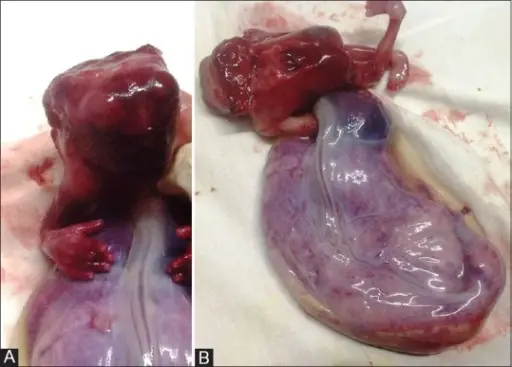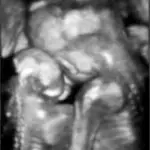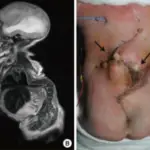Spina bifida is a type of birth defect in which the spine and membranes around the spinal cord fail to close properly. The lower back is the most common site of spina bifida.
The two most common types of spina bifida are:
- Spina bifida occulta, which is the absence of bony spinous process.
- Spina bifida cystica which includes myelomeningocele (which contains neural elements along with meninges, and is most common), and meningocele (sac containing meninges bulges through the defect).
What is the Pathology of Spina Bifida?
Etiology: The causes of spina bifida includes genetic and environmental factors which include: folic acid deficiency, alcohol, antiepileptic medications, maternal diabetes mellitus, and obesity.
Genes involved: MTHFR is involved, which guides to the production of a protein that makes vitamin folate.
Pathogenesis: Spina bifida occurs when the vertebral neural arches fail to form in the first month of pregnancy. There is maldevelopment of the ectoderm, mesoderm, and neuroectodermal tissues, that causes the layers around the spinal cord and the spine fail to close.
Histology: The histology associated with spina bifida shows different germinal layers. Squamous epithelium or fibrous connective tissue can be present on the outer layer of myelomeningocele. Blood vessels and hyalinised connective tissue is also present.
How does Spina Bifida Present?
Patients with spina bifida typically constitute more females than males, and present during the first trimester. It can be detected on a 20th week ultrasound. The symptoms, features, and clinical findings associated with spina bifida include obvious bulging defect overlying the spine, and bladder issues.
How is Spina Bifida Diagnosed?
Spina bifida is diagnosed by physical examination or fetal ultrasound.
How is Spina Bifida Treated?
Spina bifida is treated symptomatically and with surgical procedures.
What is the prognosis of Spina Bifida?
The prognosis of spina bifida is poor for patients with complete paralysis or many complications such as hydrocephalus and congenital defects. However, those which do not experience such complications live their full lives.



